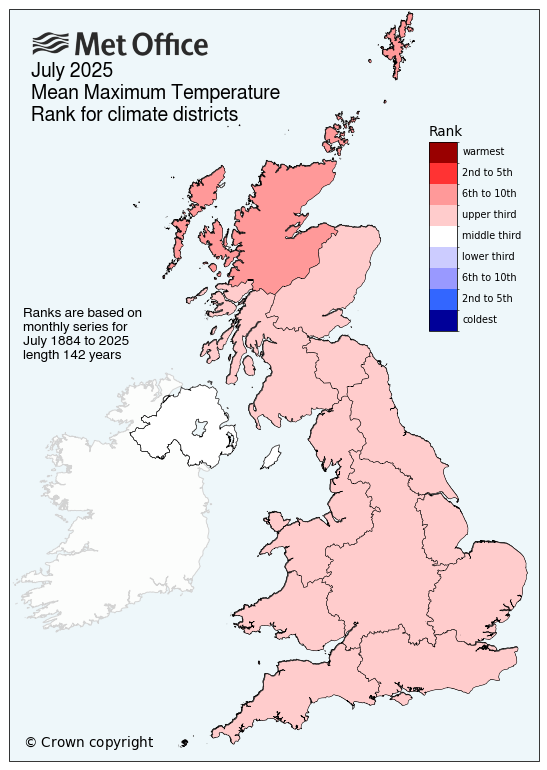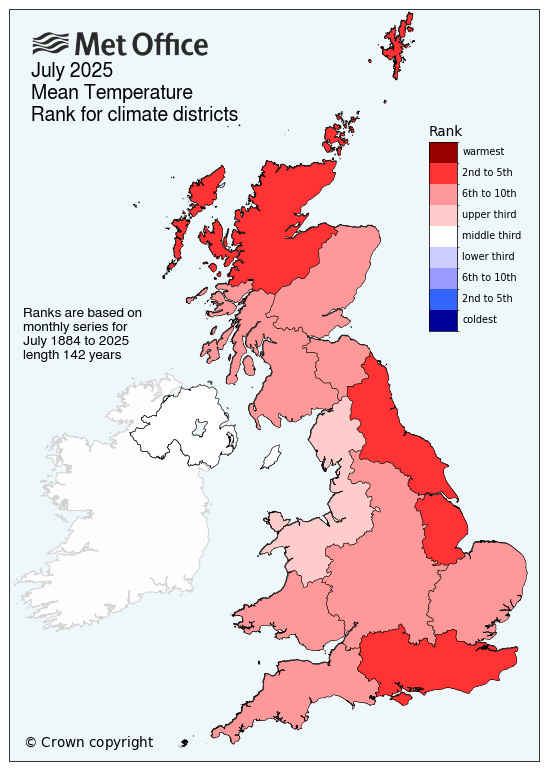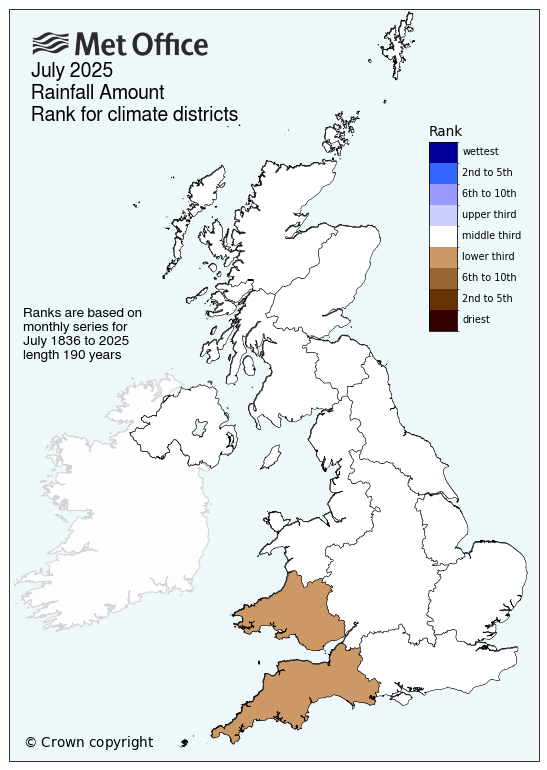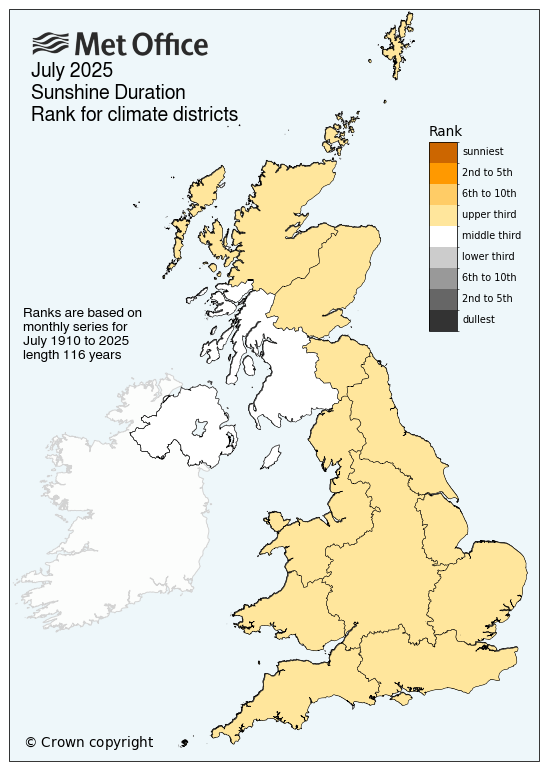Provisional Met Office statistics confirm that July 2025 was the UK’s fifth warmest July since records began in 1884, continuing a remarkable run of above-average temperatures.
This marks the sixth consecutive month of warmer-than-average conditions and the fifth month in a row to rank within the top ten warmest.
The month began with a burst of heat, peaking at 35.8°C in Faversham, Kent, the highest temperature recorded in the UK so far this year. However, the weather soon turned more unsettled, with heavy rainfall affecting parts of Scotland and northwestern areas. Despite the variability, temperatures remained consistently above average, with further thundery showers later in the month.
Above average temperatures both day and night
The UK’s mean temperature for July was 16.8°C, making it the warmest July since 2018. All four UK nations experienced one of their top ten warmest Julys on record: Scotland and Northern Ireland ranked sixth, England seventh, and Wales tenth. Notably, Shetland and Orkney recorded their warmest July since the series began.
READ MORE: UK records fifth warmest July on record
Daily maximum temperatures were 1.7°C above average across the UK, and 2.0°C above average in southern England. Daily minimum temperatures were also exceptionally high, with the UK, England, and Northern Ireland all recording their second highest July minimums on record.
Let’s take a closer look at the regional breakdown for July 2025.

East Anglia
East Anglia remained one of the warmest regions, with an average maximum temperature of 24.3°C and a mean temperature of 18.9°C. Sunshine hours were slightly lower than in June at 212.1, while rainfall increased to 54.9 mm, reflecting the more unsettled second half of the month.
READ MORE: Are storms in August unusual and why do we name them?
England SE and Central South
This region matched East Anglia for the highest average maximum temperature at 24.3°C and recorded the highest mean temperature nationally at 19.0°C. Sunshine hours were the highest of any region at 233.8, while rainfall totalled 58.7 mm, indicating a mix of dry spells and heavier showers.

Midlands
The Midlands experienced a warm and relatively dry July, with an average maximum temperature of 23.2°C and a mean of 18.1°C. Sunshine hours reached 202.8, and rainfall was modest at 52.2 mm. These figures continue the region’s trend of warm, settled summer weather.
READ MORE: 40 degree heat? 492-mile ‘rain bomb’? Met Office headline weather review
England E and NE
This region recorded an average maximum temperature of 21.8°C and a mean of 17.1°C. Sunshine hours were 185.5, and rainfall was slightly higher than in central areas at 68 mm. The figures reflect a balance of warm days and intermittent rainfall.

England NW and North Wales
Temperatures here were cooler, with a maximum average of 20.3°C and a mean of 16.3°C. Rainfall was higher at 84.2 mm, consistent with the more unsettled conditions in the northwest. Sunshine hours were lower than in the south and east, at 175.3.
READ MORE: What is the Gulf Stream and how does it affect UK weather?
England SW and South Wales
This region saw a maximum average temperature of 22.0°C and a mean of 17.5°C. Sunshine hours were strong at 220.4, while rainfall was relatively low at 43.5 mm, suggesting a generally dry and bright month with occasional showers.

Scotland
Scotland experienced cooler and wetter conditions overall, though still warmer than average. The north recorded a maximum average temperature of 18.4°C and a mean of 14.6°C, with 148.3 sunshine hours and 105.9 mm of rainfall.
Eastern Scotland was slightly warmer and sunnier, with a maximum average of 19.5°C, a mean of 15.1°C, and 160.5 sunshine hours. Rainfall was 87.1 mm.
Western Scotland saw the highest rainfall in the UK at 116.5 mm, with a maximum average temperature of 19.0°C and 143.7 sunshine hours.
READ MORE: What is the Azores High?
Met Office Scientist Emily Carlisle said: “Provisional Met Office data shows that this July was the fifth warmest on record since 1884. It’s now the sixth consecutive month with above-average mean temperatures in the UK, with only January falling below average this year. Last month (June) was the second warmest on record, and every month since March has ranked among the top ten for UK mean temperatures.
“July also saw below-average rainfall, making it the sixth month this year with drier-than-average conditions across the UK.”
Keep up to date with weather warnings, and you can find the latest forecast on our website, on YouTube, by following us on X and Facebook, as well as on our mobile app which is available for iPhone from the App store and for Android from the Google Play store.



